Hello, my name is Ryunosuke Yuki. I am a recent recruit to the Gotei 13, and I look very much forward to getting acquainted with you. My hobbies include research, study, and basically learning new things. Also, while I may not seem the go-getter type, I will do whatever it takes to protect what is important to me.
Don't wanna be here? Send us removal request.
Note
Your theory about the last chapter of re being Kaneki's dream is pretty interesting. Have you found any other oddities since you made that post? I'm looking back at that final chapter myself. I might have a look at the chapters that came before, as well, see if there's any weird foreshadowing that Ishida might've put in beforehand, too.
There is one thing I've recently noticed in the final chapter regarding Kuroiwa.

Tokyo Ghoul :re, chapter 179
In the image above, he is shown holding up a newspaper with his hands. I've drawn a red pointing to Kuroiwa's right hand, and one of his fingers is visible. However, Kuroiwa lost both of his arms and hands throughout the course of the series. At the end of the original series, Eto cut of Kuroiwa's left arm in retaliation for him cutting of her arm years prior, and he is forced to where a prosthetic.
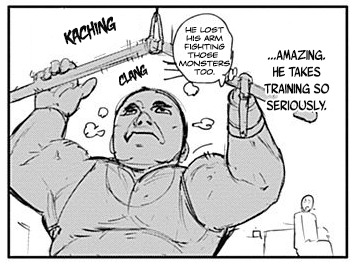
There is a hook attached to the prosthetic that allows him to grab certain things, but it doesn't have a hand or fingers. Later, when he and Urie confront Furuta in the latter's office, his right arm is torn off as well by Roma.
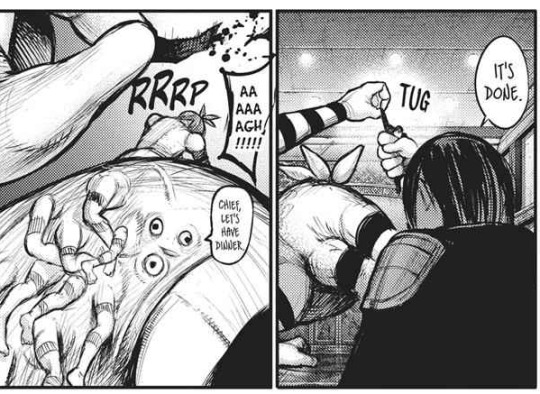
Tokyo Ghoul :re, chapter 137
So, at the end of :re Kuroiwa wouldn't have any hands to pick up a newspaper, but the final chapter still shows him with fingers.

I think this is an additional hint that the final chapter is merely happening in Kaneki's mind. In chapter 137, Kuroiwa is stabbed through the neck in a way that would be a death sentence, and he is shown to stop breathing. Those present (Urie, Marude, Hide) don't try to get him medical attention (which they would if there was a chance he could make it).
Kaneki likely heard of Kuroiwa's death, but in his dream he completely omits it. However, since he wasn't present for his fight against Roma he wouldn't know that his right arm was torn off. So, in his dream (:re 179) he still shows Kuroiwa with his right hand/fingers.
#tokyo ghoul#tokyo ghoul :re#tokyo ghoul meta#tokyo ghoul :re meta#Iwao Kuroiwa#roma hoito#eto yoshimura#ken kaneki#hideyoshi nagachika#Itsuke marude#urie kuki
42 notes
·
View notes
Text
In the story, it is Itori who states that a ghoul mother would absorb her child for nutrients. However, Itori hasn’t shown herself to be reliable narrator throughout the manga. While she occasionally gives good information, she often leaves vital parts out. That being said, in certain mammals there is a process by which a mother can reabsorb a fetus: fetal resorption.
Fetal resorption is the disintegration and assimilation of a fetus after it has formed organs (but before it forms a skeletal structure). There are different reasons why, but a common reason is nutrient deficiency in the fetus itself. If this occurs, an enzyme breaks the fetus down so it can be reabsorbed by the mother. This process can occur in humans, and so it’s not out of the question for it to happen to ghouls.
However, this raises some questions. Fetal resorption happens if the fetus is nutrient deprived, but if the ghoul mother can obtain nutrition by eating then this shouldn’t be a problem as in the story it’s shown that half-ghouls gain nutrition from eating human flesh.
Additionally, it’s shown in the story that natural one eyed ghouls like Eto are capable of eating normal food as well.

Tokyo Ghoul :re, Chapter 43
So, natural one-eyed ghouls may be able to obtain nutrition from both sources. Eto’s mother (a human) ate human flesh to give her unborn child the nutrition it needed. However, given Eto’s ability to eat normal food this may not have even been needed. However, half ghouls can also gain nutrition via flesh, and so a ghoul mother who eats properly shouldn’t reabsorb her unborn child. However, Itori said it like that’s what always happens when a ghoul mother becomes pregnant with a hybrid. Something about her words definitely doesn’t add up.
Random questions I have about Tokyo Ghoul
mostly half ghouls tbh
with half ghouls where the mom is the ghoul wouldn't the placenta keep the mothers body from being like "oh it's nutrients"? because in humans the placenta keeps the mothers body from thinking the baby is a parasite
how would a ghoul mother absorb the half ghoul fetus because that is a uterus
Technically wouldn’t a half ghoul be able to consume some amount of human food? Because that part of their biology would still need those proteins, sugars, and other nutrients that meat doesn’t give
#tokyo ghoul#tokyo ghoul :re#tokyo ghoul meta#tokyo ghoul :re meta#tg#tgre#tg meta#tgre meta#itori#eto#eto yoshimura
10 notes
·
View notes
Note
I read your thing about Kaneki being in a dream state at the end of the series (manga) I havent read the manga yet, i just finished the series, and i cried even tho i know the anime wasn't great at all in comparison to the manga which ill be reading soon, i came across this on a youtube video the link to this haha, and i dont want to believe it but it sounds very possible, Kaneki deserves happiness after what he went through.. It hurts to think that all end up being a dream. Don' you think?
I've heard many others make this claim: Kaneki deserved a happy ending because of all the pain he endured. Maybe they're right, but Kaneki made many mistakes throughout the story (he admitted as such in :re 176). Much of the suffering he endured was a result of his own actions, and he inflicted much pain and suffering on others. So, to see him get a happy ending while many other characters had their arcs unresolved seemed unbalanced to me.
5 notes
·
View notes
Text

I would be willing to give it a go. You’re definitely worth it.

Ask muse how good they are at.. [ ACCEPTING | X ]
@superryunosukeyuki asked:
💋 - kissing

“ Sureee, I’m great at kissing. You wanna give it a go? Will be the last thing you try to do~ ”
3 notes
·
View notes
Text
Rize’s Rebirth
In the final arc of Tokyo Ghoul :re, a number of plot points were left unanswered. The most prominent and mysterious of these points was Rize Kamishiro, who was the driving plot point of the arc. After Kaneki (who became a one-eyed ghoul by having Rize’s Kakuhou implanted into him) ingested the Oggai (who each had a Kakuhou of Rize’s as well) and a “core” from Furuta’s body, he transformed into an enormous Kakuja called “Dragon.”

After Kaneki was extracted the Kakuja dissolved, but it left behind a number of oviducts that continued to function. The core of the 19th ward oviduct turned out to be Rize herself.

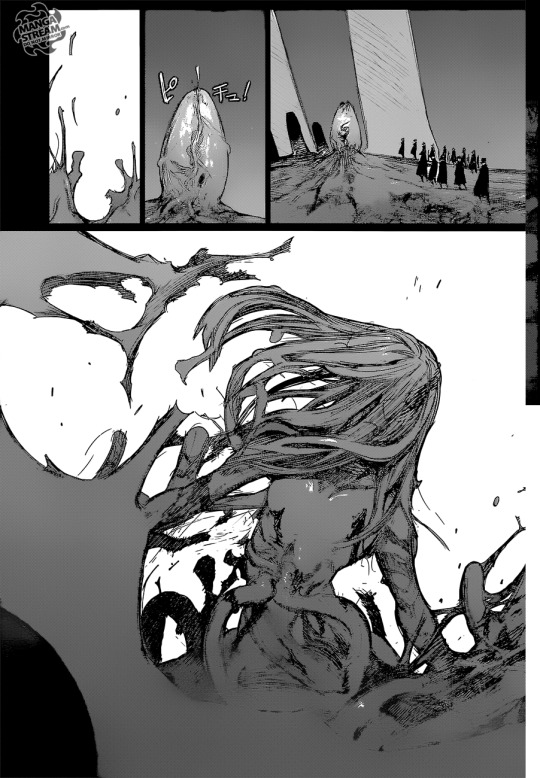

However, if you look closely at the egg membrane in the first panel, you’ll notice that there doesn’t appear to be a body inside. There are merely tentacles writhing around, but these tentacles consolidate and then Rize herself burst out of the egg. This suggests Rize was formed from the egg rather than already being present in it. But how could Rize have been “formed” if she already existed? Also, why did she later form strange, animalistic features when she was confronted by Kaneki?
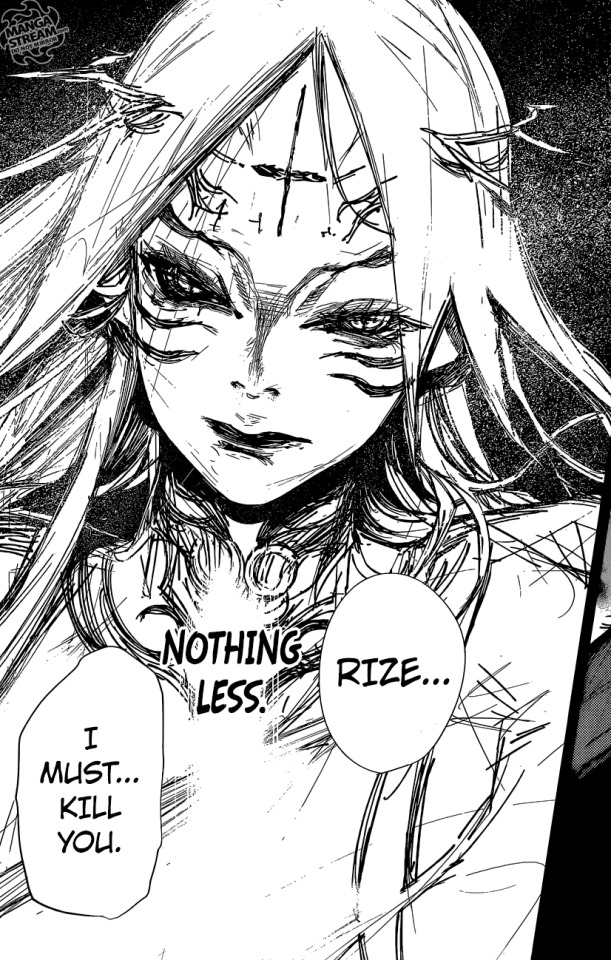
“The core”
As shown in the first image above, Kanou stated the final step towards creating Dragon was a “core” placed in Furuta’s body. @littlemissymonster once speculated that this core could have been Rize’s main Kakuhou. In the series, it’s confirmed that severely damaging or destroying the kakuhou is a death sentence for a ghoul.

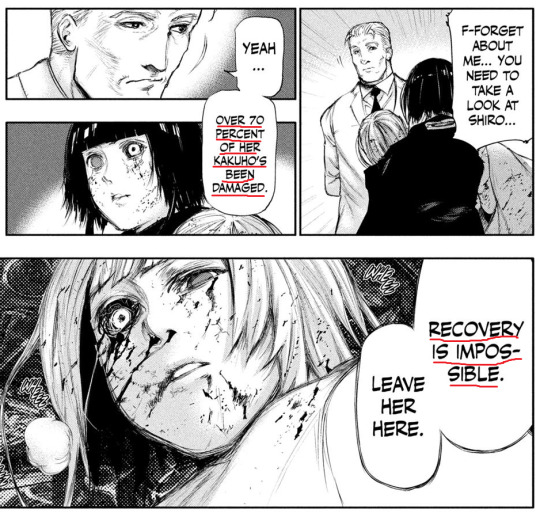
During Nishiki and Kurona’s fight with Roma on Rushima Island, Kurona tries to pierce the latter’s Kakuko because it would presumably be fatal. In the original series, Nashiro is unable to recover after having most of her Kakuko destroyed. Also, in one of the Tokyo Ghoul novels (Void), a ghoul named Noyama dies after Kaneki eats his Kakuho. However, there are also references in the series to ghouls that have multiple Kakuho sacs.


Eto (and later Yoshimura who posed as her) was determined to have 6-8 kakuho during her initial battles with the CCG. Later, during Kaneki’s battle with Shinohara in Kanou’s lab, Shinohara suspects Kaneki has multiple kakuho after he unveiled a new kagune form.
For six months prior to the battle in Kanou’s lab, Kaneki engaged in several acts of cannibalism to increase his ghoul abilities. This consumption of excess rc cells is likely what caused the formation of new kakuhou beyond the original one he received from Rize. The same is likely for Eto as she grew up in the 24th ward where it’s said cannibalism is common place.
However, this creates some confusion. In several places it’s mentioned that damaging the kakuho can be fatal. In addition to the above examples, it’s mentioned that in Yoshimura’s first fight with Arima his kakuhou received “lethal” damage. However, Shinohara managed to destroy a few of Kaneki’s kakuhou during their fight, but he continued fighting just fine. It seems that only if a ghoul’s original kakuhou (not those formed by excess consumption) is damaged then it is lethal.
This would explain why Rize was able to survive multiple Kakuhou extractions. After Furuta dropped steel beams on Rize in the first chapter, she was handed over to Kanou to extract her kakuho to create one-eyed ghouls. While Rize was never stated to be a cannibal, she did eat several times the number of humans a normal ghoul typically eats (hence her title “Binge Eater”). This could lead to the formation of extra kakuho, and so for Kanou’s experiments he would extract these extra kakuho to implant into humans. By leaving Rize’s original, or main, kakuho alone he could keep her alive and wait for these extra kakuho to grow back for further extraction.
So, the “core” that Kanou implanted into Furuta was likely Rize’s main kakuho. Extracting this would lead to her death, and this was necessary for Furuta’s plan to resurrect her (will explain below).
RC Cells as Memory Cells
In a ghoul biology post by @coromoor, it’s hypothesized that rc cells are a type of blood stem cell. This is evidenced by their presence in the bloodstream, their appearance being similar to blood cells affected by sickle-cell anemia, and their ability to regenerate multiple types of tissue.
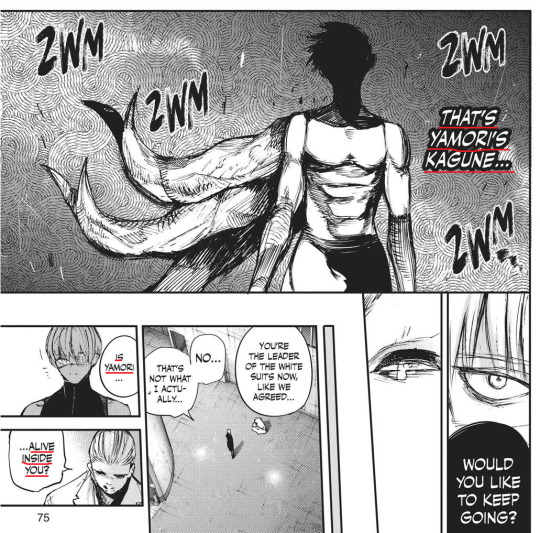

Stem cells are able to differentiate into any type of cell. This includes memory cells, and if rc cells are a type of stem cells than this explains why Kaneki (who has Yamori’s rc cells as he ate his kakuhou) is able to replicate Yamori’s kagune.
This would also explain Kaneki’s visions of Rize. In part 1, whenever Kaneki was in a mentally low state, a vision of Rize would appear and speak with him. If rc cells also double as memory cells, then this could explain these visions. As Kaneki had Rize’s kakuhou (and therefore her rc cells) he also had her memories inside of him.

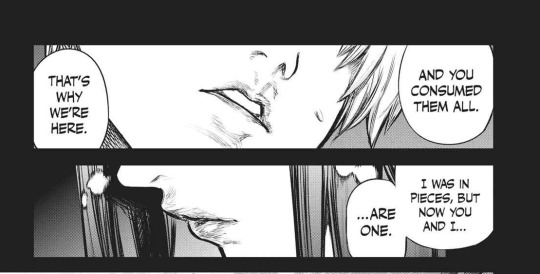
Later, when Kaneki is inside the Dragon in part 2, he has another vision of Rize. She refers to the Oggai as “small coffins.” A coffin is a container for dead remains, and this further supports the idea that she died after her her “core” (main kakuhou) was extracted from her body to be implanted into Furuta. However, her core and dozens of her other kakuhou have now been reunited inside of Dragon.
One of the panels shown at the beginning of this post showed Rize’s body forming inside of an egg. If rc cells are stem cells, then they can differentiate into any cell or tissue type (skeletal, muscle, blood, brain, etc.). By bringing together so many of Rize’s rc cells, it’s essentially created her a new body. It created a new Rize.
When this new body is formed, it’s still lacking its lower half. However, when Kaneki encounters it in :re 178 it appears more developed. It seems the purpose of Dragon was to gain energy (by eating humans) so Rize could be fully reformed.
Purpose of the Resurrection
All of this begs the question: why would Furuta go to all this trouble of resurrecting her when he could have avoided killing her in the first place?

It’s implied that continually extracting kakuho on a ghoul has negative impacts on their mental health. In a flashback in :re 65, Shachi mentions that Yoshimura’s kakuho is constantly being extracted by the Aogiri Tree (for One-Eyed Ghoul experiments). He says this has left him incognizant (lacking knowledge or awareness). This suggests the extractions have left him in a vegetative state.

This seems to be the same case for Rize (who also suffered from multiple extractions). While Furuta is talking to her in :re 119, she doesn’t acknowledge him or any of her surroundings.
Furuta’s goal from the beginning was to overthrow the Washu clan and to destroy the system they created, and to do this he needed Rize’s kakuho. However, he was also in love with Rize (having helped her escape the Sunlit Garden) and wanted to marry her. So, he used her to destroy the “cage” created by the Washu and V by unleashing the Dragon. Then, he planned to use the same Dragon to resurrect her so he could be with her.

In the end, all Furuta really wanted was a normal life.
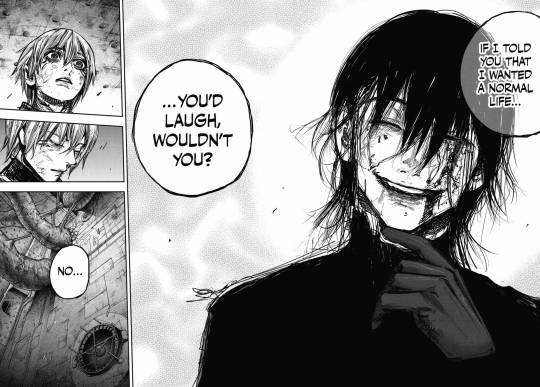
#tokyo ghoul#tokyo ghoul :re#tokyo ghoul meta#tokyo ghoul :re meta#tg meta#tgre meta#rize kamishiro#nimura furuta#ken kaneki#akihiro kanou#kurona yasuhisa#nashiro yasuhisa#eto yoshimura#arima kishou#yamori#shachi#tokyo ghoul biology#oggai#yukinori shinohara#roma hoito
246 notes
·
View notes
Text
Hacked
Hello, I just checked my activity in my settings, and I saw activity from a computer in Czechoslovakia. In short, I was hacked. I reset my account to kick them off, and then I reset my password. However, if anyone has received a message or notification from my account in the past few hours, it was not from me (again, I was hacked).
2 notes
·
View notes
Text
α-RC Cell Synthesis
In the Tokyo Ghoul series, the main conflict between humans and ghouls stems from the fact that the latter requires rc cells from human flesh in order to survive. Their dependence on rc cells is so great that they are incapable of consuming normal foods. The final chapter makes a reference to a “synthetic meat” that is being developed to feed ghouls, but Nishiki states that it tastes disgusting and that there is still much room for improvement.
Synthetic meat is an object of current research in our world. By using in vitro animal cell cultures, different types of animal meat can be grown in a lab. The hope is that this technology will advance to the point where costs go down, and this meat will then become price competitive with meat from slaughtered animals (which would subsequently lead to an end to animal slaughtering).
However, a food produced in this manner may not be ideal for ghouls. It is shown in the story that rc cells reside in the blood stream (implying they are a type of blood cell).

Blood circulates throughout the body via the different vein systems, and thus is present in the flesh (explaining why ghouls desire flesh). However, since synthetic meat is grown in a laboratory from tissue cells, it does not contain any blood. This is likely why Nishiki calls it “disgusting.” However, a simpler and more complete option may have been hinted at in the story.
Insights

In the story, it is revealed that natural human-ghoul hybrids such as Eto Yoshimura are able to consume human food. Why is this so? Some biology meta have hypothesized that ghouls produce no rc cells of their own (which is why they require human flesh), but as Eto is partly human it already produces some of the rc cells it needs. Due to this, she is able to more completely satisfy her ghoul hunger, and thus she is able to eat human food as well.
However, this logic doesn’t add up. It’s mentioned on several occasions throughout the story that ghoul rc levels are several times higher than those of humans.

It’s mentioned once in the story that ghouls can live hunger-free for 1-2 months on one human body. So, if ghouls produced no rc cells on their own and merely obtained them from humans, their rc levels would be comparable to humans or lower (when they were hungry). However, we know this is not the case. So, what if instead of ghouls producing no rc cells of their own, they don’t produce a certain type of rc cell?
In the mobile game Tokyo Ghoul: Reinvoke, rc cells are actually items that can be obtained, and there are three types: α(alpha)-rc cells that appear red, β(beta)-rc cells that appear blue, and γ(gamma)-rc cells that appear green. The existence of these three rc cell types seems to be confirmed in canon based on a post on Sui Ishida’s twitter in late 2015.

Three different numbers in red, blue, and green appear in this image of Seidou Takizawa, and are most likely rc cell counts. This seems to confirm the :reinvoke reference.
So, rather than ghouls being unable to produce any rc cells of their own, they are only unable to produce a certain type of rc cell. This type is produced in humans, and ghouls must devour them in order to obtain it. As humans in the series are the ones behind ghoul science, they would designate the names of the different rc cell types. Seeing themselves as central, they would designate their rc cells as A or α-RC cells.
Hybrid Vigor
So, as Eto, Takizawa, and the other half-ghouls are partially human they produce some of their own α-rc cells. This is likely the reason for their “hybrid vigor.” When Kaneki first meets Itori in the original series, she describes one-eyed ghouls as possessing heterosis.

One-eyed ghouls are said to be both humans and ghouls (likely because they possess all three rc cell types). So, since they produce some of their own α-rc cells they are stronger than full ghouls who have none, and this also reduces their need to feed. And, it can even allow one-eyed ghouls like Eto to eat human food.
However, you may be wondering why if Eto can eat human food then why can’t the other one-eyed ghouls who also generate α-rc cells do the same? Well, Eto is the only natural born one-eyed ghoul shown during the course of the series (aside from the Underground King shown in flashbacks). The rest are artificial ones created by implanting kakuhou from other ghouls. Since these foreign kakuhou do not (genetically) perfectly match the donor, their α-rc cells can not fully satisfy them. This explains why Kaneki and the other artificial hybrids can only eat flesh (like regular ghouls).
Synthesizing Alpha Cells
So, taking all of this into perspective: If ghouls can’t produce any α-rc cells on their own, what if they could be synthesized? If research were conducted on how to synthetically create α-rc cells, then these cells could be used to feed ghouls. Stem cells could be taken from individual ghouls, and these could be used to synthesize α-rc cells when said research was complete. By creating a cell culture from an individual ghoul’s stem cells, the resulting α-rc cells would be perfect for said ghoul.
This could be likened to synthetic insulin production. Some humans have genetic disorders that do not allow their bodies to produce insulin. However, by using recombinant DNA technology scientists have been able to create synthetic human insulin these individuals can intake via injection.
So, by synthetically creating α-rc cells with this technology, not only can a ghoul’s hunger be fully satisfied, but it may even allow them to consume human foods like Eto can.
#tokyo ghoul#tg#tokyo ghoul :re#tgre#tokyo ghoul biology#tokyo ghoul meta#tg meta#tokyo ghoul :re meta#tgre meta#tokyo ghoul biology meta#nishiki nishio#eto yoshimura#tokyo ghoul: re invoke#seidou takizawa#ken kaneki#itori#kakuhou#rc cell
88 notes
·
View notes
Note
Bleach is back!! lets celebrate!!
Ah, yes! I saw the announcement that the anime was returning as well. Also, it seems that Shonen Jump is also going to serialize the “Burn The Witch” manga that Kubo created a one shot of back in 2018.
Another thing, I read that Kubo-Sensei will be at a convention on the 21st where he will announce two new projects he will be working on. One of these seems to have already been confirmed to be “Burn The Witch,” but the second one remains a mystery. I don’t think the anime return will be his second project (since he didn’t work on the anime in the past), and so his other project may be something else. Do you have any ideas of what this could be?
6 notes
·
View notes
Text
The True Nature of the Oggai
In the latter half of Tokyo Ghoul :re, the reader is introduced to a group known as the Oggai. This is a group of more advanced Quinx that each have one of Rize Kamishiro‘s kakuhou implanted into them. They were created by Akihiro Kanou on the orders of Furuta, supposedly to eliminate all ghouls in the city. However, it’s later revealed that they were created with the intention of eventually being eaten by Kaneki, so the resulting overload of rc cells would trigger his transformation into Dragon.
However, there are still a number of things about the Oggai that were never revealed. Where did the come from? Why, despite being only pre-/early teens did they seem to have no problem with mass slaughter, and why did they normally show no emotion? Also, why would Furuta use children for this purpose?
Origins
Some have theorized that the Oggai were typical CCG revenge recruits: their families were killed by ghouls, and they thus sought revenge. This was likely supported by the presence of Hajime Hazuki, their squad A leader who was such a recruit. However, the fact that there were 100 Oggai calls this into question. To elaborate:
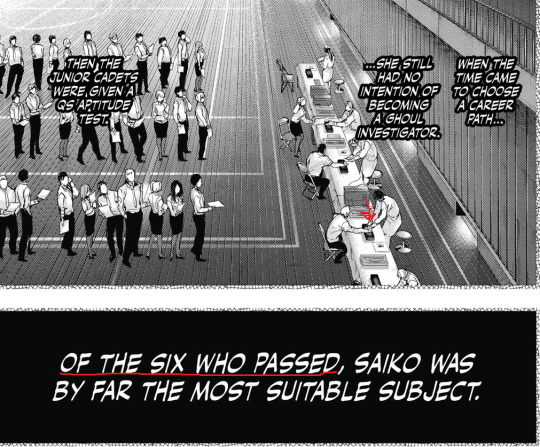
Remember, the Oggai were a type of Quinx. When the original Quinx team were in their final year at the CCG junior academy, they were given an aptitude test to whether they could actually become Quinx. In the above picture, all of the cadets appear around the same age. This suggests that only the graduating class was tested. This is further supported by Aura and Higemaru (a year younger) not receiving the test until the following year.

So, the orginal Quinx team (Urie, Saiko, Mutsuki, and Shirazu) all came from that year’s graduating class. However, the CCG has seven junior academies, and so they had seven graduating classes (Mutsuki was from the second academy, while the others were from the seventh academy). This likely amounted to hundreds of graduates (if not more).
So, here’s the point: in a graduating class of at least hundreds only six (Urie, Saiko, Mutsuki, Shirazu, and two unnamed others) were capable of becoming Quinx. From this ratio, we assume that in order to find one hundred candidates for the Oggai, it would take a candidate pool of thousands (if not tens of thousands). Also, all of the Oggai were around the same age. Even with seven academies, it’s doubtful the CCG had this many kids of the same age on hand. So, where did they come from?
Another explanation is that many of the Oggai came from the Sunlit Garden. Ching-li Hsiao, a half-human from the Sunlit Garden, was able to become a Quinx. Also, since Rize (the ghoul whose kakuhou they received) came from the garden as well, her half-human relatives would acclimate to her kakuhou especially well.
However, there may be one more explanation. In the first picture above, I've drawn an arrow point to someone administering the test. It appears to be a blood test. In the series, humans have an average rc cell blood factor somewhere between 200 and 500. The first Quinx all had rc factors that were (for some reason) above 500, but below 1000 (the minimum rc factor for a ghoul). This above average rc rate is likely what determines whether one can become a Quinx. Also, from chapter 29 of the original series:
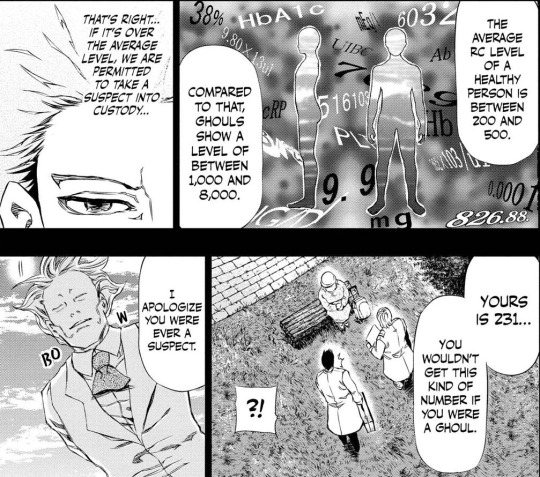
RC cell tests are performed even on ordinary citizens, with the CCG being allowed to take citizens with above average levels into custody. So, Furuta and Kanou could have simply searched through public records to find children with above average rc rates. Then, using the above law as as a precedent, took them into custody and forcibly converted them into Oggai.
So, the likely answer to where the Oggai came from is a combination of the above three hypotheses. While a few (like Hajime) may have been academy students searching for revenge, most were likely taken from the Sunlit Garden and the general public, and then subjected to the ghoulification procedure against their will.
However, this raises another question. If most of the Oggai were forcibly conscripted, why do they obey Furuta without question? The answer lies with how they were both created and trained.
The Walking Dead

While in the story it’s referenced that the Oggai were created using Quinx technology, Hajime states they were “made differently.” How they differ is alluded to in a :Re volume 11 omake.
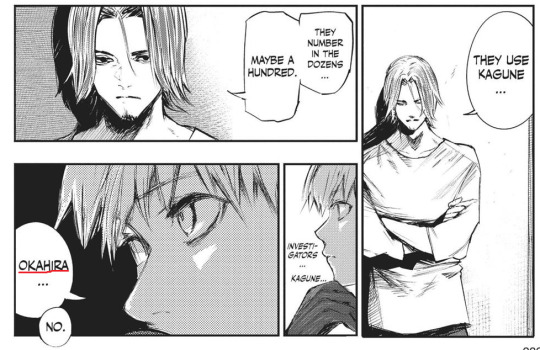
Okahira was an investigator who died when the CCG attacked the Tsukiyama family in the Rose arc. Later, he was revived by Dr. Kanou in the Rushima Island arc as a half-ghoul using Quinx technology. By making this allusion, could Ishida be telling us that the Oggai were created in the same way (killed and then revived as half-ghouls)? There is additional evidence supporting this.
For example, even during battle the Oggai typically wore blank, stoic expressions on their faces. This is similar to Okahira after his revival.

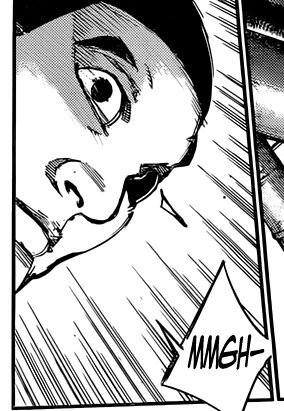
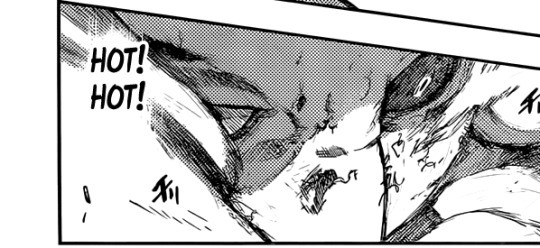
However, there are exceptions to this. Hajime of course shifts his facial features, and a girl named Mayuzumi does as well.
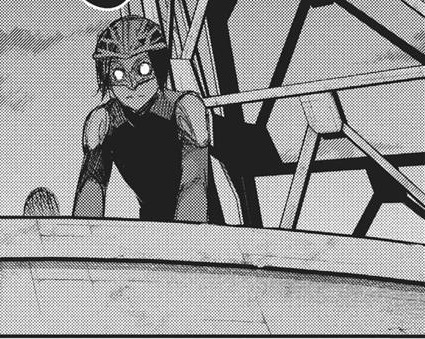
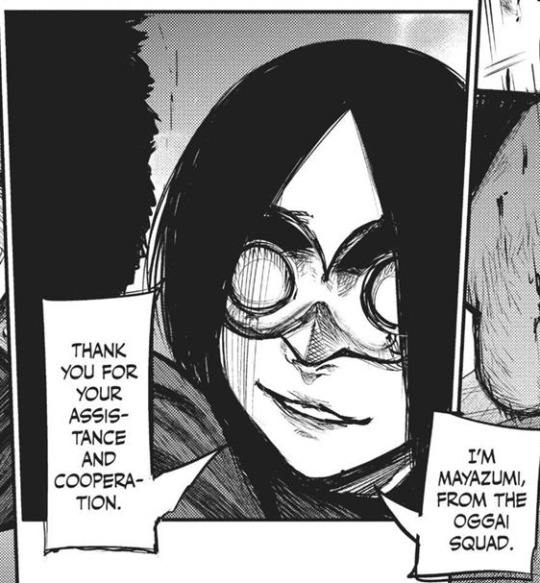
Hajime and Mayuzumi were the only Oggai named in-story, and this suggests there was something special about them. However, most of the Oggai typically had bland expressions like Okahira did. Also:

In :re chapter 134, the Oggai are beginning to frame out. In the official English translation, one of them keeps asking “why did you kill me” over and over again. This further suggests that the Oggai were murdered and then revived as half-ghouls to do Furuta’s bidding. It also helps explain their absolute obedience. After his own resurrection, Okahira says he has no choice but to serve Kanou, and later gives a reason as to why.
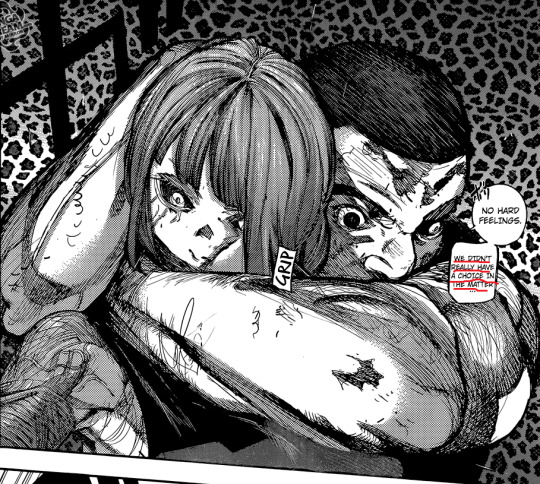

He mentions that there is a medicine he has to take every so often or else he will die again. This “medicine” is likely a concentrated rc cell solution, and if the Oggai were made in the same way Okahira was it means they would have to take this medicine as well. As Furuta and Kanou are the only ones who could supply this, they would be forced to do Furuta’s bidding unless they wanted to die a second time.
On a side note, the kanji for Oggai is an invented one that is basically just two of the death kanji. They were made to die twice: once for their resurrection as half-ghouls, and then again as fuel to create Dragon.
A Clockwork Orange
The Oggai being undead dependents explains why they obey Furuta. However, this doesn’t seem to explain why they are able to kill without hesitation despite their young age. Psychologically, the mass slaughters they are forced to commit should have some effect on them, but we don’t see this. However, this may be explain by something referenced in the story.
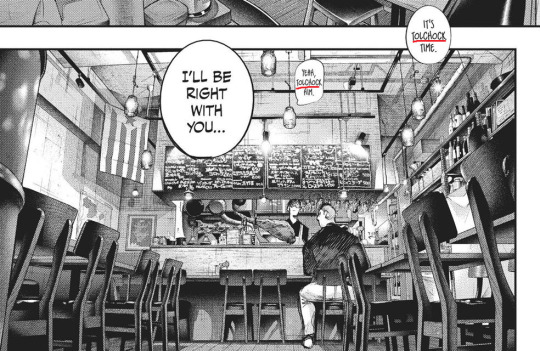
In :re chapter 127, when Mayuzumi enters a coffee shop owned by a ghoul, her companions tell her to “tolchok” him. Tolchok isn’t a real word, but an invented word mentioned in the novel (and its later film adaptation) called “A Clockwork Orange.”
Set in a dystopian setting, the story features a slang known as “Nadsat” which is a hybrid of Russian and English. One word of Nadsat is tolchok, which means “hit.” The film’s main character is a teenager named Alex DeLarge (played by a young Malcolm McDowell).
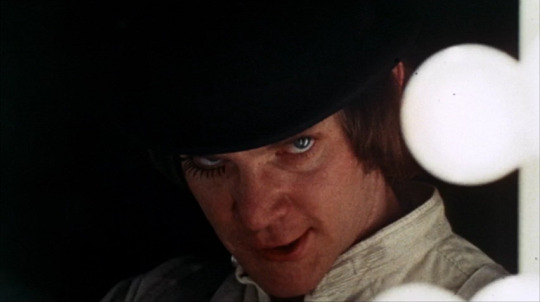
Alex regularly goes out at night with his gang members (called “droogs”) to engage in “ultra-violence.” Whenever he performs these violent acts, he sings the song “Singing in the Rain.” When Hajime is in his cell in the 24th ward in :re chapter 131.
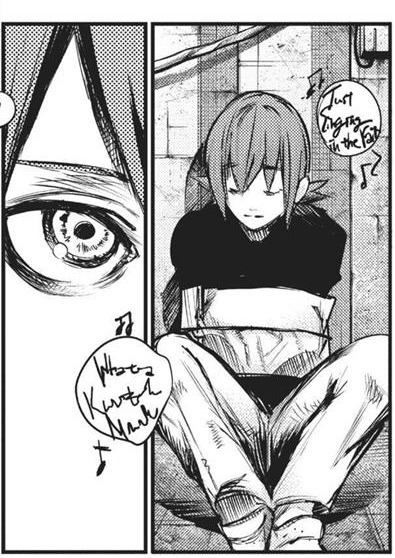
Two different Oggai both saying things related to this film suggests a correlation. In the film, Alex is caught after one of his violent escapades and is forced to go through a brainwashing therapy. Essentially, his eyes are forcibly kept open while he is made to watch terrifying images of violence and destruction on a projector.
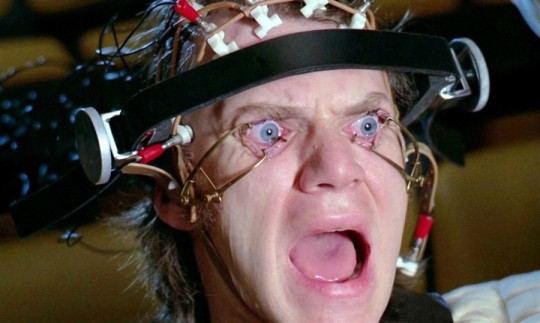
This treatment makes Alex so adverse to violence that even thinking of violent acts makes him feel ill. It works to the point where can’t even defend himself. So, while Alex was brainwashed against violence, what if the Oggai were brainwashed towards it? This would explain why killing is no problem at all for them.
RC Cell Potential
The previous points all explain where the Oggai came from and reasons for their behavior. However, all of this begs the question: why would Furuta go to such lengths to use children for his project? For his kidnapping and brainwashing, why not use older teens/early adults? A textual reason:

Kanou mentions that their young bodies cause their kakuhou to permeate quicker. This is likely due to the nature of rc cells as a type of blood cell. A post by @coromoor titled “Ghoulology 101″ suggests the rc cell to be a type of human blood stem cell because of its presence in the blood, its shape (it looks like a blood cell that has undergone sickle-cell anemia) and because it can regenerate several different tissue types. Blood cells are produced in the red marrow of the bones, and the younger you are the more red marrow you have in your bones.
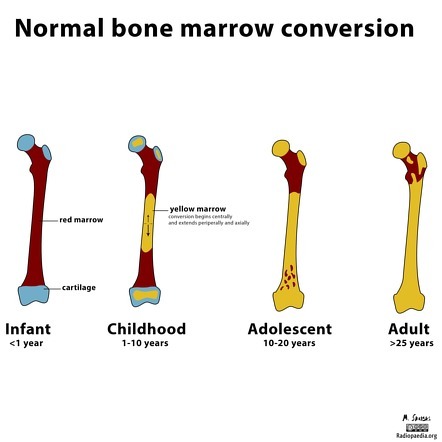
The Oggai, being in their pre-/early teens, have more red marrow in their bones than older ghouls and half-ghouls. This means they have more potential for rc cell production, and thus they can both adapt to kakuhou more quickly and form larger kagune. This is shown on occasions when the Oggai are able to quickly generate huge kagune.
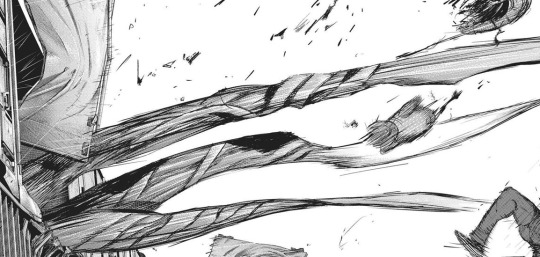
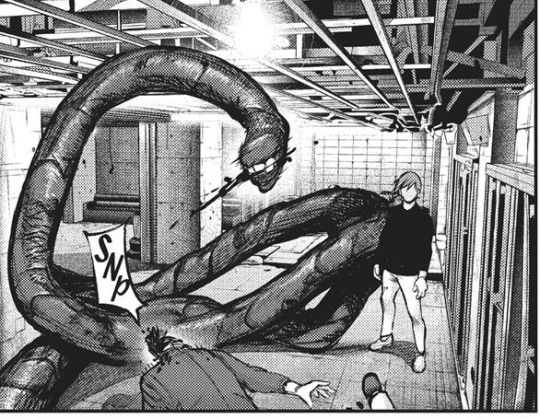
Remember, the main reason Furuta had to create the Oggai was for them to be eaten by Kaneki in order to form Dragon. Since the Oggai had greater rc cell production then that means Kaneki received a greater rc cell overload (and thus formed a larger Dragon).
Conclusion
The Oggai were (for the most part) forcibly conscripted into service for Furuta. They were kidnapped, killed, and resurrected as half-ghouls before subsequently being brainwashed into killing machines. They were subjected to all of this for the express purpose of being eaten in order to create an eldritch abomination. They were disregarded by the CCG who they were forced to work for, and despised by the ghouls they were forced to hunt. After their deaths, both sides simply forgot about them. Their story is a tragedy that shows the darkest aspects of the Tokyo Ghoul universe.
#tokyo ghoul#tokyo ghoul: re#tg#tgre#tokyo ghoul meta#tokyo ghoul :re meta#tg meta#tgre meta#tokyo ghoul biology#oggai#rize kamishiro#akihiro kanou#washuu furuta souta#ken kaneki#hajime hazuki#ccg#shinsanpei aura#touma higemaru#kuki urie#saiko yonebayashi#ginshi shirazu#tooru mutsuki#ching-li hsiao#okahira#mayuzumi#coromoor
107 notes
·
View notes
Text
The Identity of Dragon’s Nuclei
In the final arc of Tokyo Ghoul :re, after Kaneki devoured the Oggai and the core placed in Furuta’s body, he transformed into the colossal kakuja monster known as “Dragon.” Although he was eventually freed and its main body dissolved, nine oviducts remained.

Kimi Nishino theorized that there were other “nuclei” aside from Kaneki.

This theory seems to have been confirmed when Rize Kamishiro was confirmed to be the nucleus of the oviduct in the 19th ward. However, who are the nuclei of the other oviducts? While Kaneki was the nuclei of Dragon’s main body, some have theorized that he may have had an oviduct as well.

There is a special mention that one of the nine oviducts has entered a disintegration phase. Some viewers have theorized that this oviduct was the one Kaneki was in, and now that he is free it has started to dissolve. However, Kaneki’s location (while in Dragon) was revealed to have been in the 3rd ward.

However, we see during Kimi’s explanation of the oviducts that there is an oviduct in the third ward next to a large river.

However, the location Kaneki was dug out of was by a large building with no river in sight.

So, this means that Kaneki himself was not in this oviduct. So, the nuclei for the nine oviducts were Rize and eight other individuals. However, who were the other eight individuals? The answer may have been alluded to in the CCG lab infiltration arc.
re
After Kaneki and others from Goat break into the CCG laboratory in order to obtain rc suppressants for Akira Mado, they come across Koutaro Amon being held in a chamber.

After breaking out of this container, he morphs into a kakuja and battles Takizawa and Kurona. During this fight, contact with Amon’s kagune caused Takizawa’s kagune to explode.


Later, when Touka and the Quinx are attempting to remove Kaneki from Dragon, it’s body attempts to attack them. When Saiko retaliates, her kagune explodes similar to how Takizawa’s did.

This correlation suggests that Amon was intended to be a part of dragon (a nucleus). This is further supported by the presence of other pods in the room Amon was being held in.


In one scene there are shown to by three additional tubes titled “re,” and in another scene there an additional six tubes. 6+3=9, and there were nine oviducts after Kaneki was removed from Dragon. Additionally, earlier in the series it was revealed that “re” was another word for “king.” This may be a reference to the original One-Eyed King, who Furuta based Dragon off of. Furthermore, when Furuta is discussing the effects of the ghoulification poison in the final arc, Furuta clearly discusses the role of the oviducts.

So, this shows the formation of the oviducts was planned, and not an accident. Furthermore, the “re” containers shown in the lab prove the he specifically picked out nuclei for this purpose. But who are these nuclei? Like many of the plot threads introduced in the final arc, this was never answered. While we may not know of their exact identities, we may know of the actions of one of them.
Dragon Leader
It was brought to our attention in the final arc that one of the other oviducts had begun to disintegrate.

From what we’ve seen in the final arc, the only way for an oviduct to begin dissolving is for the oviduct’s nucleus to either be removed (as Kaneki was) or die (as Rize did). We established earlier in this thread that the nucleus of this oviduct couldn’t have been Kaneki, and so another nucleus must have either died or escaped.
In the final chapter, it’s mentioned that the “Dragon Orphans” that continue to roam Tokyo have approached a leader. This leader has a human appearance and “the intelligence of a five year old.” What is meant by this phrase is uncertain, as a five-year old’s mental level couldn’t make an effect leader (this phrase may actually be symbolic).

The Jaiminisbox translation provides both a clearer translation and imaging of this scene. The arrow above point to the aforementioned leader, who appears to have a kagune released, and on there right corner of the page there is a “3″ shown.
The special mention of the disintegrating oviduct hints that one of the nuclei escaped, and my working theory is that this escaped nucleus is the leader mentioned. If a 3rd part of Tokyo Ghoul is ever made, it will likely be this individual attempting to free the other nuclei from their oviducts.
#tokyo ghoul#tokyo ghoul :re#tg#tgre#tokyo ghoul meta#tokyo ghoul :re meta#tg meta#tgre meta#ken kaneki#furuta nimura#oggai#kimi nishino#rize kamishiro#akira mado#amon koutarou#seidou takizawa#kurona yasuhisa#touka kirishima#saiko yonebayashi#quinx#quinx squad
56 notes
·
View notes
Text
Kaneki’s Dream Scenery
Over a year ago, I created a meta where I proposed the final chapter of Tokyo Ghoul was a dream (https://superryunosukeyuki.tumblr.com/post/181279417006/re-179-was-simply-kaneki-dreaming). I found evidence for this based on information given in the final chapter that either didn’t add up or contradicted information previously given.
However, upon rereading the series I've found a new piece of evidence. In Kaneki’s dream scenarios throughout the series, whenever he himself is present the background is completely blank. It is either a pure white, or it shifts to a grey or black depending on the mood of the scene. The only times this changes is when Kaneki is remembering something.
Kaneki’s Dream of Rize
The first time Kaneki’s mind entered a dream state was after being tortured by Yakumo Omoro (aka Yamori) in the original series. The pain Kaneki experienced brought him to such mental lows that he hallucinated seeing Rize Kamishiro.

Notice the backgrounds. They are either completely white, or shift to a darker tone. In this chapter (62) there are a number of flashbacks Kaneki goes through, but whenever these two are just talking alone this background is shown. This is further evidenced in the following chapter. After Yamori kills a mother and child (Kei and Koto) in front of Kaneki to further break him, his hallucination of Rize reappears. When she reappears, this blank background reappears as well.

Kaneki’s Dream of Hide
Later, during Kaneki’s fight with Kishou Arima in Tokyo Ghoul :re he has several of his limbs cut off. When he is about to give up however, he suddenly has a hallucination of Hide. At the beginning of this vision the background is pure black, but once Hide appears it shifts to the pure white background that Kaneki experienced in his earlier vision of Rize. In all of Hide’s panels it shows that same blank background.


Kaneki’s Dream in :re 179
Now, the majority of chapter 179 is merely exposition as character endings are stated in info boxes. However, when Kaneki himself appears on the screen.

It’s the same blank white background he had in his dream sequences. Also, during his conversation with Hide the background shifts between pure white, pure black, or in-between as with his previous dream sequences.

Furthermore, when their conversation is finished not only are they surrounded by a pure white background, but their forms appear scratchy (further hinting that the scene isn’t real).

Finally, when Kaneki (along with Touka and Ichika) are walking out to the hill where the final scene of the chapter is, it looks as if the they are walking on a white canvas.

With this imagery, Ishida-sensei hid the truth (that the final chapter was merely an illusion in Kaneki’s mind) in plain sight.
#tokyo ghoul#tokyo ghoul :re#tokyo ghoul meta#tokyo ghoul :re meta#tg#tgre#tg meta#tgre meta#ken kaneki#yamori#rize kamishiro#kishou arima#hideyoshi nagachika#touka kirishima#ichika kaneki
94 notes
·
View notes
Text
Take Hirako’s Betrayal of Goat
Setup
Throughout the last few arcs of Tokyo Ghoul :re, there were subtle hints that someone from inside Goat was a traitor leaking information. For example, during the Clown Siege Arc Kaneki decides to assist the CCG in killing Clowns before heading out to retrieve rc suppressants for Akira Mado. They finish doing so earlier than expected (only 20 minutes), but despite this V agents have somehow already made it to their location.
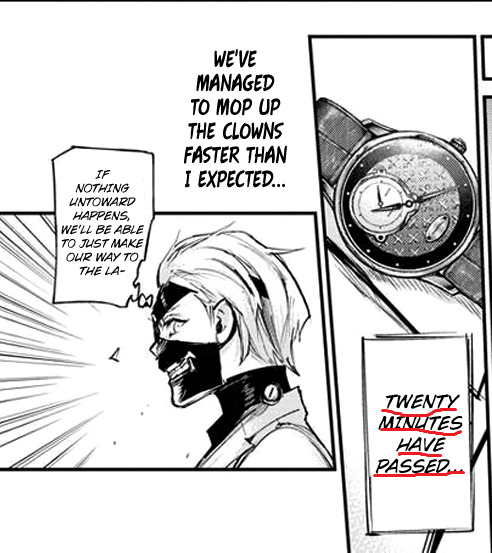

The CCG monitors only detected Goat’s presence when they arrived to fight the Clowns. So, in only the 20 minutes after being made aware of Goat’s presence they somehow made it all the way over to their location (on foot) from wherever they were previously? The only logical explanation seems to be that somebody tipped them off previously and they had men on standby.
Later, after Furuta unleashes the Oggai they destroy Goat’s 3rd base in :re 122. After this event, the Goat members do question if there was a leak.

After being made aware of the Oggai, they believe it was solely due to their sensory abilities that they were able to find the base. However, while this event was being aired on television one newscaster noted that Furuta’s performance lasted online 38 minutes.

What she meant by his “roadside performance” is somewhat vague. Did it take the Oggai 38 minutes to destroy the base in 38 minutes? Given what was shown of their strength it’s doubtful it would’ve taken them that long. So, does that mean it took them 38 minutes to both find the base and destroy it? For the Oggai to use their senses to locate the base they would have to do so on foot. So, they located the base and traveled there on foot in less than 38 minutes? It seems to good to be true that they started their search so close to the base. This again hints that someone leaked information.
Later, in an attempt to infiltrate Goat the Oggai Hajime Hazuki pretends to be a ghoul on the run in order be saved by Naki, who then takes him to Goat’s base in the 24th ward (in :re 127).


However, how could Hajime have known that Goat members would be here? He could’ve used his senses to tell that Ghouls were nearby, but he wouldn’t have been able to know that they belonged to Goat. This again suggests someone leaked information, in this case that someone revealed an area where Goat members would be active.
Later, the CCG attacks the 24th ward base while most of the stronger ghouls are out with a scavenging party. Kaneki considered this possibility, and so he assigned a communication squad led by Kaya Irimi and Enji Koma to the outskirts of the 24th ward. With Irimi’s enormous sensory abilities, she should have been able to detect any incoming attacks, and then the squad could send a transmission to the scavenging party to have them come back to base.
However, this doesn’t happen.

During the original series, after the Anteiku members went to rescue Kaneki Irimi stays outside of the complex they go into. She stays outside and uses her abilities to monitor to movements inside the entire facility.

There’s no way someone whose senses are so vast and refined wouldn’t notice large scale attack coming. The moment she felt the CCG incoming they would’ve sent a transmission. Not only does this not happen, Koma and Irimi’s squad members are shown beheaded.
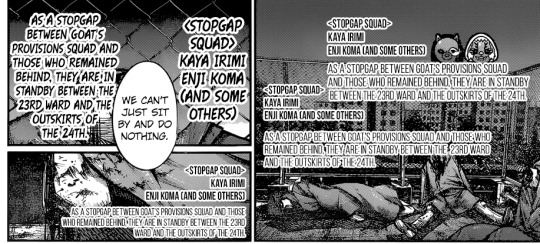
Koma and Irimi aren’t actually among the bodies here as their icons indicate that they are wearing their Devil Ape and Black Dober uniforms, while the corpses are shown wearing dark red robes. However, notice here that the bodies are facing towards the screen (inwards) rather than outwards. Meaning that whoever killed them came from behind, and so whoever killed them wasn’t the CCG who came from outwards.
This could be explain why Koma and Irimi didn’t send transmission to Kaneki. Whoever attacked them from behind undetected could only have come from the direction of the 24th ward (a fellow goat member). So, seeing a friendly face wouldn’t have put them on alert until it was too late. The traitor struck once more.
Finally, after Kaneki’s final battle with Furuta, the latter uses some interesting words when speaking to Kaneki.

How would Furuta know Kaneki had a wife or kid? Kaneki only married Touka after they decided to hide in the 24th ward. Also, knowledge of her pregnancy only became apparent when they were in the 24th ward as well. So, how Furuta hear? The answer is likely the same as previously: a traitor inside of Goat leaking information.
So far, all these points suggest a traitor inside of Goat was leaking information and working against them in secret. But who is this traitor? There is both symbolic evidence and textual evidence that suggests the identity of the traitor: Take Hirako.
Symbolic Evidence
There is symbolic evidence that ties Take Hirako to Judas Iscariot (the disciple who betrayed Jesus Christ). Judas left the Last Supper early or did not attend at all (depending on the version of the story), and later sold out Jesus for 30 pieces of silver. Later, he hung himself from a tree (thereby breaking his neck).
Just like Judas didn’t attend the Last Supper, Hirako didn’t attend the Christmas dinner at the Quinx Chateau.
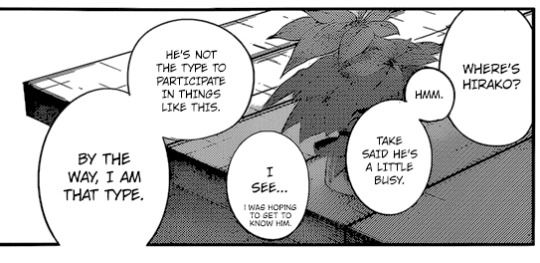
Not only that, but the plant shown in this image (with leaves in circles) looks like it was cut from a Japanese Laurel tree. In Japan, this tree is also known as the Japanese Judas-Tree, which further hints at the Judas connection. In regards to Hirako breaking his neck, there are a number of images in the Tokyo Ghoul calendar (released in 2016) that focus on his neck.
As shown in a post by @akiira-mado:
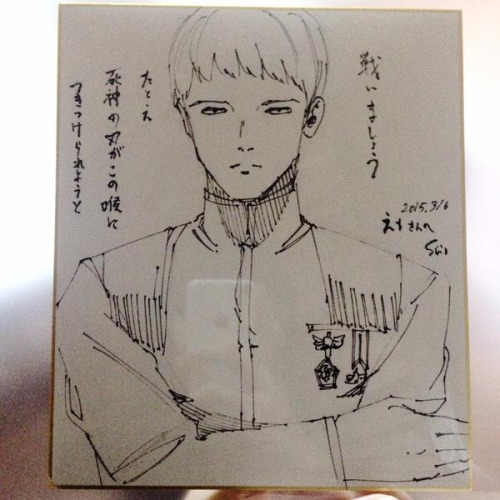
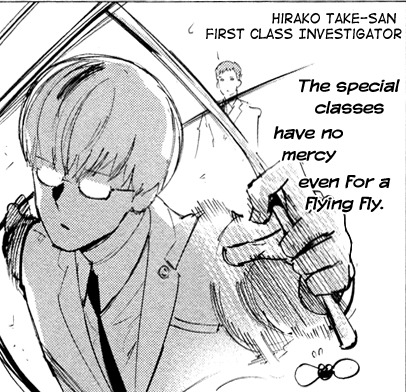
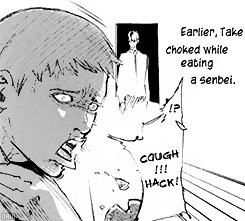
1. “Let us fight. Even if the God of Death will point his blade at my throat.“ 2. CCG’s God of Death killing a fly but it’s a strange composition, slashing X across Hirako’s neck. For such a simple omake, it would have been easy for Ishida to rework the awkward composition differently. 3. Hirako clutching his neck with Arima in the bg observing. “I felt death approaching” is Hirako’s comment about this scene.
Also, in Hirako’s card in the Tokyo Ghoul Trump series, there appears to be a sand dollar in the background.
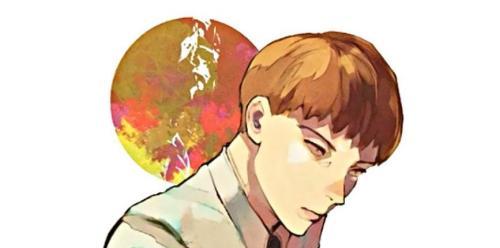
The five slits in sand dollars are said to represent Christ’s wounds on the cross. So, this is another reference to Judas as he is responsible for Christ’s wounds. Later, Hirako himself is even called Judas when confronted by Hajime Hazuki.

All of this points to Hirako as the Judas of Tokyo Ghoul, but who is the Jesus he betrayed? Throughout the story, Ken Kaneki has depicted with Christian symbolism.
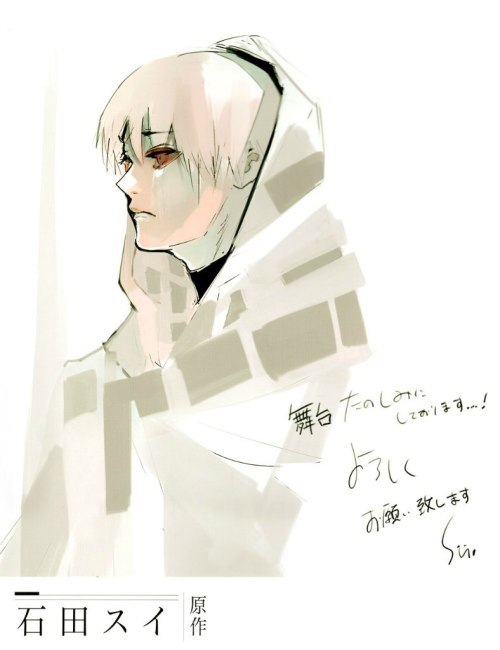

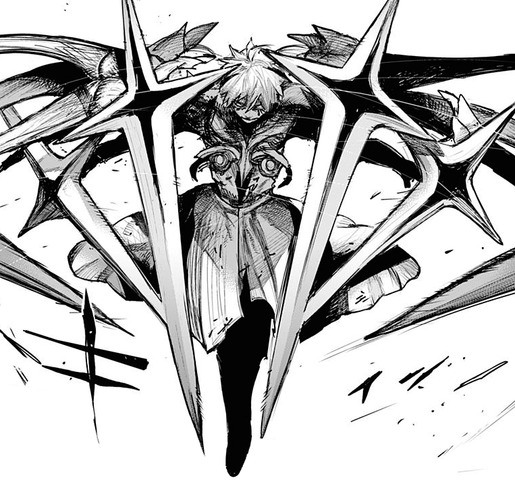
So, this sets up that Hirako is indeed a traitor to Kaneki.
Textual Evidence
Hirako is seen relatively little in the story. However, we know that he generally wears a bland, stoic expression. There are points when this expression breaks, and these point can be telling.

Hirako is typically a very passive individual who waits for orders. However, when they are getting ready to steal rc suppressants from the CCG lab in the Clown Arc, he not only volunteers himself for the lab mission but even states he has the layout of the lab memorized in order to convince Kaneki to bring him along. If you look closely at his left eye, it appears out of focus. Why did Hirako want to go to the lab so much?
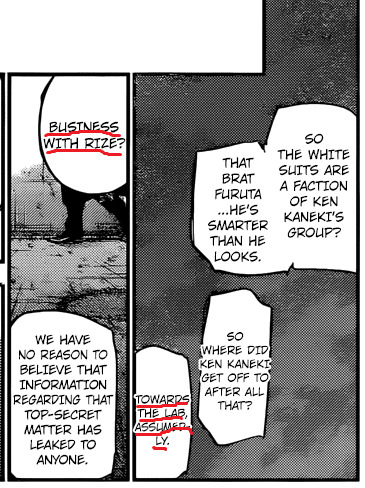
If Hirako was a traitor working for Furuta, then he may have known Rize was at the lab. He specifically mentions he has the layout of the lab memorized, and so if he went he may have tried to steer the group away from the area where Rize was (since she was vital to Furuta’s plan).
Another point made at the beginning of this meta was that somehow Hajime Hazuki knew that Naki was nearby when he pretended to be a ghoul in trouble. Later, when Hirako first confronts Hajime he appears uncharacteristically hostile.
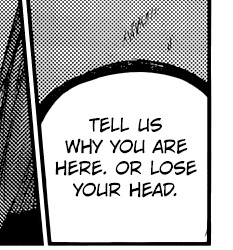
Later, when Kaneki says they will keep him locked up underground he appears worried.
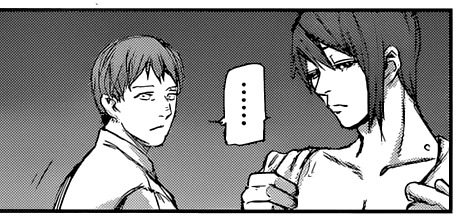
If Hirako was the one who told Furuta where Hajime could find the white suits, then Hajime may know as well. So, he may be afraid of Hajime exposing him.
Finally, there’s Irimi and Koma. They are revealed to have died at some unspecified point, but they are revived as quinques by Akihiro Kanou. In the final battle with V, after Hirako hears that the Black Dobers (Irimi) are coming to the battlefield, he looks to the side nervously.

This is likely because he had a hand in their deaths. Also, despite being used as puppets Irimi and Koma do retain some aspects of their original personality.

And who are the first people they move to attack? Hirako and Ui.

Why they attacked Ui is unclear. During the Rushima Island Arc she seemed to want to fight Ui specifically, and so she may have a grudge against him for something.
However, it’s important to note that they attack Hirako as well, probably to avenge their deaths.
Motive
Since we know so little about Hirako, it’s not really possible to know his motivations for betraying Kaneki and Goat unless Ishida-sensei reveals it to us some day. However, if we take the Judas analogy into account, we remember that Jesus was betrayed for thirty pieces of silver. According to a recent study, 30 shekels of silver in today’s money would be around $200. Imagine betraying Jesus for 200 bucks! So, the few pieces of silver were likely to illustrate the Jesus was betrayed for a petty and insignificant price. So, Hirako’s reason for betraying was likely for a petty reason.
#tokyo ghoul#tokyo ghoul: re#tokyo ghoul meta#tokyo ghoul :re meta#tg#tgre#tg meta#tgre meta#ken kaneki#akira mado#furuta nimura#oggai#hajime hazuki#naki#kaya irimi#enji koma#touka kirishima#take hirako#arima kishou#rize kamishiro#akihiro kanou#ui koori
158 notes
·
View notes
Text
Rc Cell Pathway Formation in Pure Ghouls
In chapter 37 of Tokyo Ghoul :re, Dr. Shiba reveals that half-ghouls like Kaneki and the Quinx can become stronger due to the formation of Rc cell tubes.

He explains that these Rc cell tubes are formed when their bodies are injured, and then goes on to elaborate how Kaneki’s Rc cell tubes are much more numerous than those of the Quinx due to the numerous injuries he’s endured in the past. This prompts Urie to begin strength training to tear his muscles so new Rc tubes will form to repair them.


However, it is never stated in the story if ordinary ghouls can become stronger in this manner as well. Do Rc cell tubes form when ghouls are injured? Or, since ghouls rely solely on Rc cells for nutrition, does that mean these pathways are fully formed in them from the start? In the story, I've found one such case of a ghoul being drastically injured and then gaining a power boost.
Ayato’s Sudden Power Boost
At the end of the Aogiri Arc in the original Tokyo Ghoul series, Kaneki broke half of Ayato Kirishima’s bones in the infamous “103″ bones scene.

Months later, after Ayato has recovered he begins killing ghoul investigators as the “Black Rabbit” in order to draw the CCG away from Touka’s trail. During the scene we are shown of this, Ayato only uses the left wing of his kagune (probably to mimic Touka whose left wing was much larger than her right at this point). However, the size of the wing itself was much larger than it was prior to the timeskip (and prior to the bone breaking). For comparison:


Dr. Shiba stated that rc cell tubes exogenously formed the kagune. So, by that logic, more tubes should mean a larger kagune. So, could Ayato having half his body broken have forced the formation of enough rc cell tubes to explain this huge kagune increase? While ghouls can heal more quickly than humans, Ayato’s rc type is Ukaku as opposed to Rinkaku (meaning he can’t rapidly regenerate). Therefore, having half his bones broken means that even Ayato would be down for a while. After recovering, Ayato would have had his Aogiri duties, and thus probably not a lot of spare time to train. So, the creation of new rc cellular tubes seems the most logical answer to his sudden power creep.
After hearing how half-ghouls can get stronger “the more they get hurt,” Urie decides to train to tear his muscle fibers to form new rc cellular tubes. However, Dr. Shiba never stated a particular way of getting hurt that would form these tubes the most effectively. Ayato’s method (broken bones) may be the most efficient method of doing this due to the nature of rc cells.
Rc Cells in the Blood
In a post titled “Ghoulology 101″ by @coromoor it goes over how rc cells are presented as a type of human blood cell. This is supported in-story as rc cells resemble “curled-up fetuses” similar to blood cells afflicted by sickle-cell anemia. Furthermore, rc cells have been shown to heal many different tissue types (skin, muscle, bone, etc.). To be able to do this rc cells must be able to differentiate into different cell types like human blood stem cells.
However, human blood cells are formed in the red marrow. Red marrow is primarily found in long and flat bones: hip bones, breast bones, the skull, the ribs, vertebrae and shoulder blades, and the proximal ends of the femur and humerus. So, by association could we assume that the majority of rc cells are formed in these bone as well? Also, if these bones were damaged, would rc cellular tubes form due to the interaction between rc cells and the red marrow? Finally, would the tubes to these bones more numerous than to other areas of the body?
The answer to all three of these questions seems to be yes based on another aspect of the “Ghoulology 101″ post.

As pointed out in Kaneki’s rc scan, the most concentrated areas of rc tube formation are around the bones where red marrow is primarily found.
Conclusions
Ayato horrific injuries and subsequent power boost seem to indicate that rc cellular tubes can form in pure ghouls the same way as they do in half ghouls. Additionally, the way in which he was injured shows the quickest and most efficient way to form these pathways. Bones are simple enough to break symmetrically (something Kaneki mentions when torturing Ayato), and breaking them means the rc cells that move to heal them come into contact with the red marrow inside of them (the source of rc cell formation).
While red marrow is primarily found in long and flat bones, trace amounts are found in the other bones as well. So, the quickest way to fully develop the body’s rc cellular tube network would be break all of the bones in the body. Doing this all at once would kill someone, but doing it gradually over time would counteract this. While this of course would be painful, ghouls have accelerated healing so any damages could be reversed soon enough.
#tokyo ghoul#tokyo ghoul: re#tg#tgre#tokyo ghoul meta#tokyo ghoul :re meta#tg meta#tgre meta#tokyo ghoul biology#ken kaneki#ayato kirishima#kuki urie#ryoujirou shiba#rc cell#kagune#kakuhou#ukaku#rinkaku
94 notes
·
View notes
Text
Kagune Activation
Background
In a Tokyo Ghoul biology meta by @coromoor (Ghoulology 101 series), she discussed rc cell activation. We know from the series that both humans and ghouls possess rc cells. However, humans can’t rapidly regenerate using their rc cells in the way ghouls are able to. She hypothesized this was because certain cells aren’t activated until they reached certain organs (Ex. white blood cells don’t activate until they reach organs such as the spleen). Accordingly, rc cells may not become truly active until they are stored in a kakuhou. This would explain why ghouls eating humans (who have inactive rc cells) don’t develop kakuja, while ghouls eating other ghouls (who have active rc cells) do.
Theory
This makes one wonder: if kakuja are formed by an excessively large number of active rc cells, what would be the effect of a kakuja’s cells interacting with inactive rc cells?
In the series, we are made aware that some ghouls are incapable of releasing their kagune. This is revealed to be due to rc cell tube blockage near the kakuhou. This is explained when by Dr. Kanou when he reveals he knows that Naki’s henchman Gagi and Guge were ghouls who couldn’t use their kagune.

When cell tubes are blocked, certain functions in the body become inactive. For example, fallopian tubes are used to transport eggs from the ovary to the uterus in females. However, these tubes can be blocked, and as a result the eggs can’t reach their destination (resulting in infertility). This blockage is usually a result of the tubes themselves being damaged.
However, ghoul’s have extraordinary healing abilities, and so any damaged rc cell tubes would likely regenerate. A more likely explanation is that the cells in the tube themselves are inactive. In humans, certain diseases are caused by genetic defects that cause cells to be inactive or not produced at all.
Despite this, certain cells can be activated when they are presented with other cells (helper T-cells are activated by the presence of antigen-presenting cells). So, if the inactive cells in these rc tubes were exposed to the overly active rc cells of a kakuja (by either eating the kakuja or being injured by its kagune), could they themselves be activated and release the kagune?
Going back over the series, I seem to have found one such case. We don’t know the exact percentage of the ghoul population that is unable to release their kagune, but one such ghoul is prominently featured in the story: Banjou Kazuichi.

In Part 1, Banjou is a ghoul (who can’t release his kagune) forcibly conscripted into Aogiri Tree. Later, he joins with Kaneki’s anti-Aogiri group. After they infiltrate Kanou’s lab, Banjou is run through by Kaneki in his deranged kakuja state.

However, for some reason at this moment Banjou’s kagune finally awakens and heals him.

Tsukiyama thought his may have been because his kakuhou reacted because his life was in danger. However, when Gagi and Guge were on the verge of death their kakuhou didn’t react in this way. Going by the previous line of thought, it’s possible Banjou’s inactive rc cells were activated by contact with Kaneki’s kakuja cells.
You may be wondering what I mean: Banjou didn’t eat any of Kaneki’s flesh, and he wasn’t injured by his kagune. However, Kaneki did scrape Banjou’s insides with his nails. Human fingernails are strengthened using iron transported by red blood cells. However, ghouls are only able to consume rc cells, and thus rc cells are present in and strengthen their nails. This is evident as several ghouls (Kaneki, Noro, Hakatori, and Uta) develop black fingernails for some reason. Additionally, during the Anteiku raid Kaya Irimi and her gang (the Black Dobers) used their nails as weapons. They were strong and sharp enough to be used as blades against the enemy.

So, when Kaneki ran through Banjou in his kakuja state, the active rc cells in his fingernails interacted with Banjou’s inactive rc cell tubes. This caused said tubes to activate and allowed Banjou’s kagune to be released.
Afterthoughts
This raises an interesting thought. Banjou’s kagune is only capable of healing in the story. However, the rate at which it can heal both Banjou himself and others is extremely high. Likewise, Kanou stated that Gagi and Guge’s latent kagune were “extraordinary.” It seems that whatever the root cause of the rc cell tube blockage/inactivation is causes the latent kagune to be unique.
#tokyo ghoul#tokyo ghoul meta#tokyo ghoul :re#tokyo ghoul :re meta#tg#tg meta#tgre#tgre meta#coromoor#akihiro kanou#gagi#guge#naki#ken kaneki#banjou kazuichi#noro#hakatori#uta#tokyo ghoul biology#tokyo ghoul genetics#kaya irimi
173 notes
·
View notes
Text
Kaya Irimi’s True Relationship With Chuu Hachikawa
One of the most overlooked battles in the Tokyo Ghoul series is Kaya Irimi’s battle with Chuu Hachikawa at the end of Part 1. This may be since they both have limited screentime (Irimi only appears personally in around 30 chapters, and Hachikawa has far less). In particular, Hachikawa only appears for a few chapters in the final arc in part 1, and then for even fewer chapters in :re before he is killed off by Rio on Rushima Island. However, in what time he has important information is provided about his past, and how it’s linked to Irimi’s.
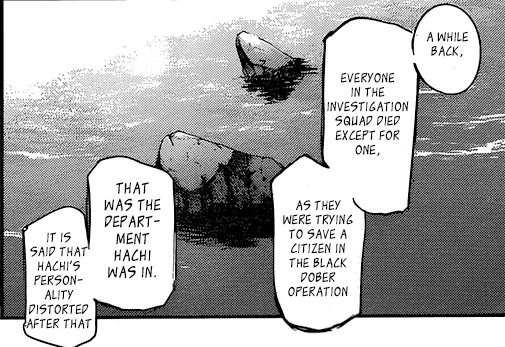

Ten years before the end of the original series, Hachikawa was part of an operation against Irimi and her old gang (the Black Dobers). However, his entire unit was wiped out with him being the sole survivor, and his face mauled. This led to him bearing an intense grudge against Irimi that culminated in his battle with her. However, information given during their battle and subsequent information hint at a deeper relationship between them.
Firstly, it’s mentioned that his superiors were with him in the unit that was wiped out (meaning, investigators more skilled than himself). Not only that, but as we see during the battle at Anteiku, the Black Dobers as a group were fully intact.

So, not only was Hachikawa’s unit entirely wiped out, but they caused little if any damage to the Black Dobers. So, if at the end of this operation the Black Dobers lost few if any members and Hachikawa was all alone (and not even the strongest investigator who’d been present), what stopped them from finishing him off? As Ghouls are much faster than humans and have heightened senses, it’s doubtful that he could’ve escaped. So, what then?
Well, during Irimi’s fight with Hachikawa, we get subtle hints as to why. Firstly, before their fight Irimi hears a familiar sound.

This sound stops her in her tracks, but what was it? It wasn’t the incoming shots being fired at her, because those are what snaps her out of what she was focusing on. So, what was the sound? Well, first we need to review how a ghoul’s sound detection ability works. As revealed by Kaya herself earlier in the manga:

Ghouls can determine who a person is based on the sound that their bodies create. So, during the Anteiku raid when she stopped dead in her tracks when she heard “that sound” is must have been made by someone she was familiar with. After she dodges the bullets shot at her, we see who it is:

Hachikawa was supposedly just a member of an investigative team that Irimi once fought. However, she’s able to notice his presence among all the other investigators just by hearing the sound his body makes (after not seeing him for ten years). Not only that, but she even knows him by name. She also refers to him by the nickname “Hachi,” which is the same nickname his subordinate Ayumu Hogi refers to him by.


So, she not only knows him by name, but she can even sense when his body is present after being apart for a decade. She refers to him by the affectionate nickname of “Hachi” and they even engage in playful banter while trying to kill one another. This all points to one thing: they were lovers.
Further Evidence
Now, you may be thinking this is crazy, but there is additional evidence. In the Tokyo Ghoul novel, Past, in one chapter it goes over Enji Koma’s first days at Anteiku. He was Yoshimura’s first employee, and after a while Kaya Irimi started working there as well. He is extremely surprised by this and wonders why she chose to start working there. He also mentions that when she started working there is around the time that the CCG became aware of her gang. If the CCG hadn’t become aware of the Black Dobers yet, then they couldn’t have performed any operations against them. So, the first operation against the Black Dobers (where Hachikawa’s face was mauled) actually happened after Irimi started working at Anteiku.
During this chapter, a regular customer who seems to be infatuated with Koma points out his good points to Irimi, and she then becomes jealous of easily he can get along with humans. She then resolves to work harder at this. Why would the leader of a violent ghoul gang just suddenly want to be friendly with humans? Well, in this chapter when Irimi is talking with this customer it’s revealed she had a boyfriend around this time. If this boyfriend were a human then it could explain why she inexplicably started working at Anteiku. She wanted to learn how to live in the human world with him, and so she saw Anteiku as a way out of the life she had been living now that the CCG had begun targeting her and her gang.
Based on this reasoning and the previous evidence, we would assume this boyfriend to be Hachikawa. It would also explain why Hachikawa was spared when the rest of his squad was killed. However, during the battle of Anteiku Hachikawa wasn’t surprised when Irimi was unmasked (he wasn’t surprised to see who the Black Dog really was). Therefore, if they were in a relationship he must have learned she was a ghoul at some point.
However, if he knew what she looked like why didn’t he inform the CCG after his squad was killed by her gang? A textual reason:

If Hachikawa knew Irimi was a ghoul and didn’t report her to the CCG then he could have been punished due to this law. Even if he didn’t know (perhaps he found out during the first Black Dober operation) he could still have been punished regardless. Remember, we see in Tokyo Ghoul :re that Furuta uses this law to have Yoriko imprisoned even though she didn’t know Touka was a ghoul (because there was no way to prove it). There would be no way to prove Hachikawa didn’t know his girlfriend was a ghoul, and so he could’ve been punished regardless. Even if wasn’t punished, if it became public knowledge that he dated a ghoul (the one who killed his team no less) he would’ve become severely stigmatized in the CCG and elsewhere due to the overwhelming prejudice against ghouls. So, Hachikawa was maimed by the woman he loved and all his friends were killed, but he had no chance to take revenge on her for a decade. This is likely what caused him to develop his bitter personality.
Fun fact, Ishida-sensei says he partially named Hachikawa after “Hachiko.” Hachiko was a loyal Akita dog who waited on his dead owner to return for nine years until his death (like Hachikawa waited nearly a decade to try and obtain revenge against Irimi). Takizawa even refers to Hachikawa as this when he spots him on Rushima.

Irimi’s Side of the Story
However, if Hachikawa was Irimi’s boyfriend why would she bite his face off? During the Anteiku battle, she also seems to have great animosity towards him. Perhaps Hachikawa (after learning she was a ghoul ten years previously) leaked information about the Black Dobers to the CCG which led to his squad’s operation against them? This betrayal would make Hachikawa’s desire for revenge rather ironic, as it would mean it was his fault that his squad got killed. However, there is more. After the end of her battle against Hachikawa in the Anteiku raid (when she thinks she is going to die) she tells him she will see him in hell with a knowing smile on her face.

While Irimi spends this chapter reflecting on her own past sins, here she reveals knowledge of something damning she knows he’s done. As for what that is, Ishida-sensei leaves us a clue on the cover page of chapter 131.

Here, Ishida-sensei draws an “X” mark on Irimi’s stomach. He has used “X” several times throughout the story, and it always refers to one thing.

He uses it to refer to a hybrid of the two species. He uses “X” to denote this several times in the story. For example, when Eto Yoshimura (who is a one-eyed ghoul) went on her first rampage, she was titled “X” by the CCG. The title of :re chapter 125 (where Kaneki and Touka have sex and conceive a hybrid child) was also “X.” So, this is Ishida telling that at one point Irimi became pregnant with a hybrid child.
However, when Itori discusses hybrids in the original series, she states it’s impossible for female ghouls to give birth to hybrids.

Here she states a ghoul mother’s body would absorb her child for nutrition. However, the validity of this statement comes into question when her other statement was proven to be false. She states that if a human mother becomes pregnant with a hybrid then that hybrid wouldn’t be able to receive proper nourishment (rc cells). Despite this, we’ve seen that the mother could simply consume human flesh like Ukina did for her daughter Eto. However, we’ve seen in a few instances in the story that Eto (a natural hybrid) is capable of consuming human food, so even this may not have been necessary. Furthermore, Kishou Arima stated that most hybrids were born as half-humans who only required human food, and so they wouldn’t need to be fed rc cells in the womb regardless.
So, since Itori was wrong/lying about human mothers of hybrids, could she be incorrect about ghoul mothers as well? How exactly would a ghoul mother’s body consume her child from the uterus?
Irimi becoming pregnant with a human’s child and then it dying in the womb serves no narrative purpose. So, we presume that she became pregnant with Hachikawa’s child and successfully delivered, but there is no mention of such a child in the original series or the sequel. So, what happened to it?
This “X” on Irimi’s womb is shown on the cover of chapter 131, and this is the same chapter where she states she will see Hachikawa “in hell.” So, what could Hachikawa have done to merit him going to hell? Considering the “X” symbol, he probably killed their child. He figured out at some point that Irimi was a ghoul, and so he killed the child they had together due to his prejudice against ghouls.
Irimi’s Disillusionment with the Past
When Irimi and Koma reunite with Kaneki in :re chapter 99, at first all parties appear happy. However, then Kaneki states that having them all together feels like “Anteiku” all over again. Upon hearing this statement, everyone begins to either smile or reminisce. All except for one:

If you look close enough at Kaya’s hair, you can see a “2,” a “3” to the right of it, and a “J” above the 3. Ishida-sensei commonly places tarot numbers on character in their defining moments.
The 2 refers to the High Priestess which represents: hidden talents, things yet to be revealed, mystery, spiritual insight, and intuition. While the others remember Anteiku happily, Irimi’s intuition and insight let her know that it was only a happy dream (an escape from the normal, everyday lives of ghouls). She joined to learn how to live with her lover, but that lover betrayed her. And how did this dream end? All her old friends from her gang were slaughtered like animals.
The 3 refers to the empress which represents: pregnancy, a new opportunity, abundance, stability, nurturing, and maternal care. This likely refers to the child she lost, another down side of her days at Anteiku (which further explains why she is unhappy at the mention of Anteiku).
The J is part of the High Priestess card. In the background of this card there are two pillars.

The “B” refers to “Boaz,” which means “to negate.” The “J” refers to “Jachin” which means “beginning.” The beginning of what exactly in unclear. Perhaps she will finally begin to move beyond her past?
Kaya Irimi, The Lord of Ruin, and the Future
Sui Ishida once released a playing card deck called “Tokyo Ghoul Trump.” In it, each playing card has the illustration of either one or two characters (meaning he identified them with that card). For Irimi, he placed her on the 10 of Spades card.

Regarding tarot, the spades suit also refers to the swords suit. Thus, she is also the 10 of Swords, which is also known as The Lord of Ruin.

When it is upright, the 10 of Swords refer to: painful endings, deep wounds, betrayal, loss, and crisis. However, we also see in this card that the sun is rising. It is the end of a dark night and the dawning of a new day. We also see that the hand gesture that is made is the same one made by tarot #5: the Hierophant. Ishida-sensei has also identified her with this number in the past as well.

In addition to the “X” that had identified she had a hybrid child at one point, there is also a “5” here which refers back to the 10 of Swords. She has suffered deep wounds in the past: her lover betrayed her, she lost her child, and she thinks she is going meet a painful ending until she is saved by Kaneki. However, we also see her with this number at the end of Tokyo Ghoul :re.

Here, after rotating this image sideways we can see #5, which again refers back to the 10 of Swords. Here it seems to be in a reversed position, and when the 10 of Swords is reversed it refers to recovery and regeneration. However, Irimi is presumed to have died in this panel, and so if she died how could she recover?
Well, Naki and his White Suits were shown to have died in the 24th Ward, but they later returned. Many fans have theorized that this is because they were exposed to Dragon’s toxin underground, and so this same method could be used to restore Irimi to life. At the end of the original series Irimi stated she felt the need for her past sins with her death. So, maybe dying and then being brought back is exactly what she needs in order to move on?
Sui Ishida has stated that there “probably” wouldn’t be any further Tokyo Ghoul sequels, and recently he has been working on a video game related series called “Jack Jeanne” for the past three years (which is about to be released). However, he has also expressed interest in creating another manga in the future, and him saying “probably” still leaves the option open. If the sun rises on Tokyo Ghoul again, the sun will rise on Kaya Irimi as well.
#for some reason this post stop appearing in searches#sui ishida#tokyo ghoul#tokyo ghoul: re#tg#tgre#tg meta#Tokyo Ghoul: Past#kaya irimi#chuu hachikawa#shikorae#ayumu hogi#anteiku#enji koma#furuta nimura#touka kirishima#yoriko kosaka#seidou takizawa#eto yoshimura#ken kaneki#itori#ukina#kishou arima#the high priestess#the empress#10 of swords#10 of spades#the hierophant#naki
151 notes
·
View notes
Text
How Ken Kaneki Condemned Tokyo
Dragon Orphans
In the aftermath of Kaneki’s ravaging of Tokyo as Dragon, several individuals throughout the city who were originally human began turning into ghouls. This was apparently explained in story by Nimura Furuta, who explained that the “Dragon Orphans” produced by Dragon’s remains (the nine oviducts) contained a Ghoulification toxin. If they were killed, they would self-destruct and release this toxin to infect any nearby individuals.

However, we later learn from Kimi that there are in fact two types of these Dragon Orphans: ones who don’t contain the toxin, and those that do. The ones that do all originated from the oviduct located in the 19th ward. This is the oviduct that contains Rize Kamishiro as its nucleus, and Kaneki and Ayato later investigate it.


However, despite the poisonous Dragon Orphans only coming from this oviduct, soon after the dissolution of Dragon (and the formation of the oviducts) there are nearly 1000 new ghouls all throughout the city.

Some of the locations where these infected individuals are shown to be at are far outside of the 19th ward. For example, there are infected patients brought into the CCG’s main office in the 1st ward.

Additionally, an infected individual is shown ghoulifying in a 9th ward hospital.

Furthermore, it’s revealed that many infections have occurred in the city’s 23rd ward as well.

These wards are far from the 19th ward, and in particular the 9th and 23rd wards are on opposite ends of the city.

So, how could these creatures traveling by foot traverse such huge distances (Tokyo is the largest metropolis in the world) in such a short time? Another question is, why would they need to? According to Furuta, the purpose of these creatures was to devour humans and take the energy they gain back to their oviducts (so it could birth more Dragon Orphans). So, they would need to stay as close to their respective oviducts as possible. So, the 19th ward Dragon Orphans would stay as close to their oviduct as possible. So, if the toxin-bearing Dragon Orphans aren’t the sole source responsible for the infections throughout the city, what other sources are at work. The answer may surprise you.
The Greatest Source of the Toxin-The Underground King
When some of the individual oviducts in the city are being shown, one is shown to be emitting small amounts of a black smoke.

So, this raises the question of whether the oviducts themselves emit the toxin. Of the oviducts shown, only this one was shown letting out black smoke (indicating there is something unique about it). However, even if it’s being released constantly this small amount wouldn’t be able to infect over such a wide area so quickly. However, this wispy black smoke rising in the air reminded me of something else.

After Kaneki first transforms into Dragon and burst out of the 24th ward, there are pillars of black smoke that dissipate the further they rise into the air. Given how much it resembles the Ghoulification toxin, I think it’s safe to say it’s the same thing. However, why was so much of this toxin being stored underground? The only logical explanation is that it was the byproduct of the previous Dragon, the Underground King.
Over 100 years before the start of the series a one-eyed ghoul belonging to the Washuu clan rebelled. He somehow transformed into Dragon, and wreaked havoc on the surface. Eventually, he was somehow sealed underground, where the 24th was formed. As Furuta based Kaneki’s Dragon on the original, then the original Dragon also produced the Ghoulification toxin, and sealing him underground was likely to prevent the toxin from spreading. Eventually, the Underground King’s followers neutralized him when he went berserk.

However, in between his initial sealing and his subsequent defeat by his followers, the Underground King would have constantly been emitting this toxin, and it would have built up underground. However, when Kaneki became Dragon and breached the surface, this built up toxin would have risen to the surface as well.
Given how Ishida-sensei used Christian allegories in the final arc, I looked for and found a passage in the bible that corresponds to this smoke from the underground rising to the surface:
"Then the fifth angel blew his trumpet, and I saw, a star that had fallen to Earth from the sky, and he was given the key to shaft of the bottomless pit. When he opened it, smoke poured out, as though from a huge furnace, and the sunlight and air turned dark from the smoke. Then locusts came from the smoke and descended on the Earth, and they were given the power to sting like scorpions. Their king is the angel from the bottomless pit, his name in Hebrew is Abaddon, and in Greek, Apollyon- the Destroyer."
The Chosen Few
However, this raises a new question. If toxin built-up for around 100 years was released, why were only 1000 individuals turned into ghouls? Shouldn’t the number be much higher? The answer to this may have been revealed during Furuta’s initial explanation of the toxin. While he was talking, a group of soldiers attacked the nearby Dragon Orphans and were exposed to the toxin. However, even though they were all exposed, only two of the soldiers started showing reactions to it. The others showed no signs of being affected at all.

Earlier in the series, when Dr. Kanou was experimenting on how to create one-eyed ghouls, he had very few successes despite his best efforts. This shows that becoming a ghoul requires one to have very specific parameters. What these parameters are can’t be said for certain, but only select individuals have them. So, the toxin must only affect individuals who can actually become ghouls.
Pointless in Retrospect
With the knowledge the Underground King’s toxin was responsible for Ghoulifying Tokyo as opposed to Rize’s oviduct, Kaneki’s final mission seems rather pointless. While he managed to cause the oviduct to collapse, the damage had already been done. The massive amounts of toxin held underground were already released to spread throughout Tokyo, and every individual with the parameters to become a ghoul was transformed into one. The moment Kaneki chose to eat the Oggai (which led to his transformation into Dragon), he had already condemned them to that fate.
#tokyo ghoul#tokyo ghoul :re#tg#tgre#tg meta#tgre meta#tokyo ghoul meta#tokyo ghoul :re meta#ken kaneki#furuta nimura#kimi nishino#ayato kirishima#rize kamishiro#sui ishida#akihiro kanou#oggai#underground king
35 notes
·
View notes
Text
Kaya Irimi’s True Relationship with Chuu Hachikawa
One of the most overlooked battles in the Tokyo Ghoul series is Kaya Irimi’s battle with Chuu Hachikawa at the end of Part 1. This may be since they both have limited screentime (Irimi only appears personally in around 30 chapters, and Hachikawa has far less). In particular, Hachikawa only appears for a few chapters in the final arc in part 1, and then for even fewer chapters in :re before he is killed off by Rio on Rushima Island. However, in what time he has important information is provided about his past, and how it’s linked to Irimi’s.


Ten years before the end of the original series, Hachikawa was part of an operation against Irimi and her old gang (the Black Dobers). However, his entire unit was wiped out with him being the sole survivor, and his face mauled. This led to him bearing an intense grudge against Irimi that culminated in his battle with her. However, information given during their battle and subsequent information hint at a deeper relationship between them.
Firstly, it’s mentioned that his superiors were with him in the unit that was wiped out (meaning, investigators more skilled than himself). Not only that, but as we see during the battle at Anteiku, the Black Dobers as a group were fully intact.

So, not only was Hachikawa’s unit entirely wiped out, but they caused little if any damage to the Black Dobers. So, if at the end of this operation the Black Dobers lost few if any members and Hachikawa was all alone (and not even the strongest investigator who’d been present), what stopped them from finishing him off? As Ghouls are much faster than humans and have heightened senses, it’s doubtful that he could’ve escaped. So, what then?
Well, during Irimi’s fight with Hachikawa, we get subtle hints as to why. Firstly, before their fight Irimi hears a familiar sound.

This sound stops her in her tracks, but what was it? It wasn’t the incoming shots being fired at her, because those are what snaps her out of what she was focusing on. So, what was the sound? Well, first we need to review how a ghoul’s sound detection ability works. As revealed by Kaya herself earlier in the manga:

Ghouls can determine who a person is based on the sound that their bodies create. So, during the Anteiku raid when she stopped dead in her tracks when she heard “that sound” is must have been made by someone she was familiar with. After she dodges the bullets shot at her, we see who it is:

Hachikawa was supposedly just a member of an investigative team that Irimi once fought. However, she’s able to notice his presence among all the other investigators just by hearing the sound his body makes (after not seeing him for ten years). Not only that, but she even knows him by name. She also refers to him by the nickname “Hachi,” which is the same nickname his subordinate Ayumu Hogi refers to him by.


So, she not only knows him by name, but she can even sense when his body is present after being apart for a decade. She refers to him by the affectionate nickname of “Hachi” and they even engage in playful banter while trying to kill one another. This all points to one thing: they were lovers.
Further Evidence
Now, you may be thinking this is crazy, but there is additional evidence. In the Tokyo Ghoul novel, Past, in one chapter it goes over Enji Koma’s first days at Anteiku. He was Yoshimura’s first employee, and after a while Kaya Irimi started working there as well. He is extremely surprised by this and wonders why she chose to start working there. He also mentions that when she started working there is around the time that the CCG became aware of her gang. If the CCG hadn’t become aware of the Black Dobers yet, then they couldn’t have performed any operations against them. So, the first operation against the Black Dobers (where Hachikawa’s face was mauled) actually happened after Irimi started working at Anteiku.
During this chapter, a regular customer who seems to be infatuated with Koma points out his good points to Irimi, and she then becomes jealous of easily he can get along with humans. She then resolves to work harder at this. Why would the leader of a violent ghoul gang just suddenly want to be friendly with humans? Well, in this chapter when Irimi is talking with this customer it’s revealed she had a boyfriend around this time. If this boyfriend were a human then it could explain why she inexplicably started working at Anteiku. She wanted to learn how to live in the human world with him, and so she saw Anteiku as a way out of the life she had been living now that the CCG had begun targeting her and her gang.
Based on this reasoning and the previous evidence, we would assume this boyfriend to be Hachikawa. It would also explain why Hachikawa was spared when the rest of his squad was killed. However, during the battle of Anteiku Hachikawa wasn’t surprised when Irimi was unmasked (he wasn’t surprised to see who the Black Dog really was). Therefore, if they were in a relationship he must have learned she was a ghoul at some point.
However, if he knew what she looked like why didn’t he inform the CCG after his squad was killed by her gang? A textual reason:

If Hachikawa knew Irimi was a ghoul and didn’t report her to the CCG then he could have been punished due to this law. Even if he didn’t know (perhaps he found out during the first Black Dober operation) he could still have been punished regardless. Remember, we see in Tokyo Ghoul :re that Furuta uses this law to have Yoriko imprisoned even though she didn’t know Touka was a ghoul (because there was no way to prove it). There would be no way to prove Hachikawa didn’t know his girlfriend was a ghoul, and so he could’ve been punished regardless. Even if wasn’t punished, if it became public knowledge that he dated a ghoul (the one who killed his team no less) he would’ve become severely stigmatized in the CCG and elsewhere due to the overwhelming prejudice against ghouls. So, Hachikawa was maimed by the woman he loved and all his friends were killed, but he had no chance to take revenge on her for a decade. This is likely what caused him to develop his bitter personality.
Fun fact, Ishida-sensei says he partially named Hachikawa after “Hachiko.” Hachiko was a loyal Akita dog who waited on his dead owner to return for nine years until his death (like Hachikawa waited nearly a decade to try and obtain revenge against Irimi). Takizawa even refers to Hachikawa as this when he spots him on Rushima.

Irimi’s Side of the Story
However, if Hachikawa was Irimi’s boyfriend why would she bite his face off? During the Anteiku battle, she also seems to have great animosity towards him. Perhaps Hachikawa (after learning she was a ghoul ten years previously) leaked information about the Black Dobers to the CCG which led to his squad’s operation against them? This betrayal would make Hachikawa’s desire for revenge rather ironic, as it would mean it was his fault that his squad got killed. However, there is more. After the end of her battle against Hachikawa in the Anteiku raid (when she thinks she is going to die) she tells him she will see him in hell with a knowing smile on her face.

While Irimi spends this chapter reflecting on her own past sins, here she reveals knowledge of something damning she knows he’s done. As for what that is, Ishida-sensei leaves us a clue on the cover page of chapter 131.

Here, Ishida-sensei draws an “X” mark on Irimi’s stomach. He has used “X” several times throughout the story, and it always refers to one thing.

He uses it to refer to a hybrid of the two species. He uses “X” to denote this several times in the story. For example, when Eto Yoshimura (who is a one-eyed ghoul) went on her first rampage, she was titled “X” by the CCG. The title of :re chapter 125 (where Kaneki and Touka have sex and conceive a hybrid child) was also “X.” So, this is Ishida telling that at one point Irimi became pregnant with a hybrid child.
However, when Itori discusses hybrids in the original series, she states it’s impossible for female ghouls to give birth to hybrids.

Here she states a ghoul mother’s body would absorb her child for nutrition. However, the validity of this statement comes into question when her other statement was proven to be false. She states that if a human mother becomes pregnant with a hybrid then that hybrid wouldn’t be able to receive proper nourishment (rc cells). Despite this, we’ve seen that the mother could simply consume human flesh like Ukina did for her daughter Eto. However, we’ve seen in a few instances in the story that Eto (a natural hybrid) is capable of consuming human food, so even this may not have been necessary. Furthermore, Kishou Arima stated that most hybrids were born as half-humans who only required human food, and so they wouldn’t need to be fed rc cells in the womb regardless.
So, since Itori was wrong/lying about human mothers of hybrids, could she be incorrect about ghoul mothers as well? How exactly would a ghoul mother’s body consume her child from the uterus?
Irimi becoming pregnant with a human’s child and then it dying in the womb serves no narrative purpose. So, we presume that she became pregnant with Hachikawa’s child and successfully delivered, but there is no mention of such a child in the original series or the sequel. So, what happened to it?
This “X” on Irimi’s womb is shown on the cover of chapter 131, and this is the same chapter where she states she will see Hachikawa “in hell.” So, what could Hachikawa have done to merit him going to hell? Considering the “X” symbol, he probably killed their child. He figured out at some point that Irimi was a ghoul, and so he killed the child they had together due to his prejudice against ghouls.
Irimi’s Disillusionment with the Past
When Irimi and Koma reunite with Kaneki in :re chapter 99, at first all parties appear happy. However, then Kaneki states that having them all together feels like “Anteiku” all over again. Upon hearing this statement, everyone begins to either smile or reminisce. All except for one:

If you look close enough at Kaya’s hair, you can see a “2,” a “3” to the right of it, and a “J” above the 3. Ishida-sensei commonly places tarot numbers on character in their defining moments.
The 2 refers to the High Priestess which represents: hidden talents, things yet to be revealed, mystery, spiritual insight, and intuition. While the others remember Anteiku happily, Irimi’s intuition and insight let her know that it was only a happy dream (an escape from the normal, everyday lives of ghouls). She joined to learn how to live with her lover, but that lover betrayed her. And how did this dream end? All her old friends from her gang were slaughtered like animals.
The 3 refers to the empress which represents: pregnancy, a new opportunity, abundance, stability, nurturing, and maternal care. This likely refers to the child she lost, another down side of her days at Anteiku (which further explains why she is unhappy at the mention of Anteiku).
The J is part of the High Priestess card. In the background of this card there are two pillars.

The “B” refers to “Boaz,” which means “to negate.” The “J” refers to “Jachin” which means “beginning.” The beginning of what exactly in unclear. Perhaps she will finally begin to move beyond her past?
Kaya Irimi, The Lord of Ruin, and the Future
Sui Ishida once released a playing card deck called “Tokyo Ghoul Trump.” In it, each playing card has the illustration of either one or two characters (meaning he identified them with that card). For Irimi, he placed her on the 10 of Spades card.

Regarding tarot, the spades suit also refers to the swords suit. Thus, she is also the 10 of Swords, which is also known as The Lord of Ruin.

When it is upright, the 10 of Swords refer to: painful endings, deep wounds, betrayal, loss, and crisis. However, we also see in this card that the sun is rising. It is the end of a dark night and the dawning of a new day. We also see that the hand gesture that is made is the same one made by tarot #5: the Hierophant. Ishida-sensei has also identified her with this number in the past as well.

In addition to the “X” that had identified she had a hybrid child at one point, there is also a “5” here which refers back to the 10 of Swords. She has suffered deep wounds in the past: her lover betrayed her, she lost her child, and she thinks she is going meet a painful ending until she is saved by Kaneki. However, we also see her with this number at the end of Tokyo Ghoul :re.

Here, after rotating this image sideways we can see #5, which again refers back to the 10 of Swords. Here it seems to be in a reversed position, and when the 10 of Swords is reversed it refers to recovery and regeneration. However, Irimi is presumed to have died in this panel, and so if she died how could she recover?
Well, Naki and his White Suits were shown to have died in the 24th Ward, but they later returned. Many fans have theorized that this is because they were exposed to Dragon’s toxin underground, and so this same method could be used to restore Irimi to life. At the end of the original series Irimi stated she felt the need for her past sins with her death. So, maybe dying and then being brought back is exactly what she needs in order to move on?
Sui Ishida has stated that there “probably” wouldn’t be any further Tokyo Ghoul sequels, and recently he has been working on a video game related series called “Jack Jeanne” for the past three years (which is about to be released). However, he has also expressed interest in creating another manga in the future, and him saying “probably” still leaves the option open. If the sun rises on Tokyo Ghoul again, the sun will rise on Kaya Irimi as well.
#sui ishida#tokyo ghoul#tokyo ghoul: re#tg#tgre#tg meta#Tokyo Ghoul: Past#kaya irimi#chuu hachikawa#shikorae#ayumu hogi#anteiku#enji koma#nimura furuta#touka kirishima#yoriko kosaka#seidou takizawa#eto yoshimura#ken kaneki#itori#ukina#kishou arima#the high priestess#the empress#10 of swords#10 of spades#the hierophant#naki
163 notes
·
View notes